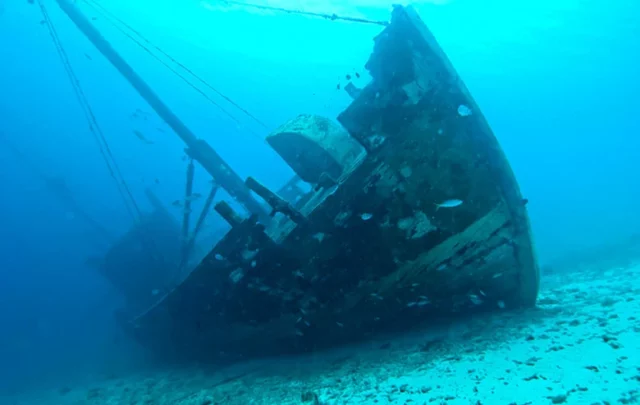
By Baris Ozdinc
A recent article in Smithsonian Magazine highlights the impact of sunken shipwrecks on the local marine ecosystem, including microbial communities. Shipwrecks bring alien nutrients to the seafloor and, in some cases, contaminate it with chemicals. Sunken shipwrecks could leak oil, benzol or benzene for years, carry heavy metals such as lead and cadmium in their cargo, or could contain lead, asbestos or PCBs, depending on age. These are significant stressors for the seafloor, an environment where even the physical impact of a ship could erode coral reefs, mangrove roots and seagrass beds. Despite the fact that a sunken ship is like a chemical store on the seafloor, these ships are flourishing with life. Consequently, they attract the attention of marine microbial ecologists like Dr. Hamdan. Dr. Hamdan and researchers sampled the microbiome of a shipwreck in the Gulf of Mexico, known as the Anona, and her muddy vicinity. According to Dr. Hamdan, “It was undeniable that the closer you got to the shipwreck, the higher the microbial biodiversity got.” The results showed an overall trend of increasing biodiversity approaching the shipwreck, but also a spike in biodiversity a few hundred feet from the ship, highlighting the dispersal of the ship’s debris. Dr. Hamdan describes the muddy seafloor and shipwreck as “two separate worlds”, along with blooming biodiversity at their interface.
Interestingly, the research group of Dr. Hamdan observed this ecological pattern in other shipwrecks from the Gulf of Mexico, raising the question: why are shipwrecks such marine microbial biodiversity hotspots? A response comes from Dr. Erin Field, a geomicrobiologist who sampled a steel-hulled shipwreck in a North Carolina estuary with her colleagues. Their research illustrated that microbial communities were different at different spots on the wreck. On one hand, steell hulls attracted iron-oxidizing microbes. On the other hand, wood hulls attracted microbes that can break down cellulose and other organic compounds. As microbes cycle nutrients they start a biofilm, propagating signals and founding a community. Dr. Field says that biofilm signals allow organisms to “… make a nice environment for other organisms to come in.” However, not all shipwrecks are biodiversity sanctuaries. Another study found that a giant serving of iron from a shipwreck at Rose Atoll, American Samoa, skyrocketed abundance of certain algae species to drive the coral reefs nearby to extinction, only to recover after the removal of the shipwreck. Therefore, microbial ecology after a ship sinks should be closely monitored, because often these microbial communities are not monitored long enough, regardless of whether it is an accident or a project. A dramatic increase in microbial life may just be a signal indicating later erosion. There are still many unanswered questions on how human debris, including shipwrecks, interact with marine biodiversity. Global climate change is another big factor that increases the complexity of analyzing the microbial communities of shipwrecks. It is not clear how global temperature increase would affect those communities and overall seafloor dynamics. Clearly, humans and their activities shape the world and the distribution of organisms in it. The seafloor is not immune to this impact. Thorough studies of marine environments are important to understanding the role of human activities on the microbial communities found there and their impact in overall marine environment health.

